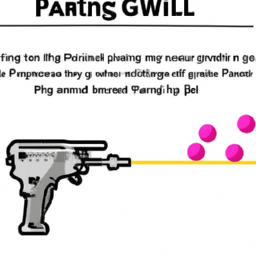Paintball Guns How Do They Work
How Do Paintball Guns Work
Understanding How Paintball Guns Work
The thrill of playing paintball has brought people together from all walks of life since its birth in the early 80s. While the games, teams, and strategies have evolved over the years, the basics of the paintball gun remain the same. Let's take a look at the vital components that power your paintball experience and determine how such guns work.
Components
Driven by compressed gas, typically carbon dioxide (CO2), paintball guns are made with several key components. The air tank is a pressurized container that stores the gas and releases it when needed. Then you have the barrel, which houses the paintball. As it is propelled out of the gun, the barrel also stabilizes the paintball's trajectory and reduces vibration.
Engineering fans should be sure to check out the trigger frameand functioning assemblies. The trigger frame houses the mechanisms that allow you to trigger the firing of the paintball gun. The functioning assemblies are the components that manage air flow management and the cycling of the paintball gun.
Features
Paintball guns are designed to give players the ability to operate them with ease. Having the right paintball gun features can make a difference in improving accuracy and prowess on the field.
Grips
Grips allow players to secure their gun effectively for better aiming. You can choose from ergonomic, wrap-around, or stick gripping.
Triggers
Triggers come in a variety of shapes and sizes, and they can be adjusted for length, tension, and internal sears. This addition can be useful to customize for shooting accuracy and maximize your performance.
Scopes & Sights
Scopes and sights range from basic open sights, red dots, magnifying scopes, and more. Securing the right type for your needs is important for accurate visibility and shooting in all lighting conditions.
Benefits
Paintball guns have been engineered to keep players safe, while providing them with enough power to compete competitively and reach their goals. The right features can help players customize their guns to their individual needs.
Other benefits of owning a paintball gun can include higher accuracy, improved shoot-to-kill ratio, better muzzle velocity, and increased distance. All of these add up to create an overall improved and more enjoyable paintball experience.
Pros & Cons
Pros:
- Suitable for enhancing paintball game performance
- Can customize different features to improve accuracy, distance, and shoot-to-kill ratio
- Can adjust settings like length, tension, internal sears, and more
Cons:
- Gas tanks and paintball canisters can be costly
- Firing a paintball gun can use a lot of gas
- Can be difficult to aim in some lighting conditions
FAQs
Q: What type of gas is used to power a paintball gun?
A: The most commonly used gas is carbon dioxide, or CO2.
Q: How accurate can paintball guns be?
A: Depending on the features that you use, paintball guns can be very accurate. Having an adjustable trigger and the right sights can help you improve accuracy in all lighting conditions.
Q: Are paintball guns allowed on private premises?
A: Paintball guns may be used on private premises as long as the landowner has given their permission. It's recommended to check with your local authorities and the property owner for clarification before using a paintball gun.
Mistakes People Make
No matter your skill level, there are some mistakes that all paintballers should avoid.
1. Lack of Research
Not researching paintball guns can lead to a sub-par experience. Researching components, features, and types of guns can provide valuable information on what gun can work best for you.
2. Bad Muzzle Control
Keeping the muzzle of your paintball gun pointed in a safe direction is one of the most important safety rules of the game. Muzzle control is also essential for competitive play, as players must ensure that their paintball gun is never moved past the front bunkers.
3. Not Cleaning Your Gun
Paintball guns need regular cleaning and maintenance for the best performance. Without this, players can suffer issues with their paintball guns due to dirt, dust, and paint build-up.
Case Studies
Case Study 1: Bob
Bob is a beginner paintballer looking for a paintball gun that will suit his needs. By researching different components and features, Bob was able to decide on the type of gun and features that he needed for an enjoyable and competitive experience.
Case Study 2: Jeff
Jeff is a previous paintball veteran but had not been active in the game for some time. After refreshing his knowledge on basic gun safety and muzzle control, Jeff was able to join a game without any issues or restrictions.
Best Practices
When it comes to paintball guns, the following practices can help improve your experience.
- Be sure to follow all safety and game rules
- Research different types of guns and components before buying one
- Make sure to maintain and clean your paintball gun regularly
- Tune barrel bores to maintain accurate shooting
- Choose the right type of ammo and features for the field
- Don't forget your protective gear before heading out of your game
Conclusion
Paintball guns can provide a fun and competitive experience. As long as you practice safety and proper gun maintenance, you can gain the full benefits that paintball has to offer. Researching components and features can help you find the right gun to fit your needs, while following basic best practices can help you focus on improving your game performance.
Now that you know how paintball guns work, you can join a game without any worries. Good luck and get ready to have a blast!

Previous Page
Next Page
